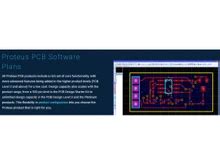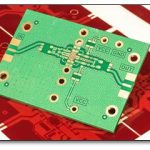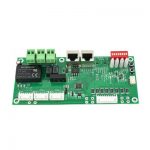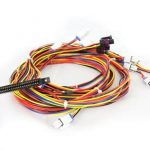Introduction to PCB Design and EDA Tools
Printed Circuit Board (PCB) design and Electronic Design Automation (EDA) simulation tools are essential for the development of modern electronic devices. These tools allow engineers to create, simulate, and optimize PCB designs before manufacturing, saving time and costs while ensuring the highest quality and reliability of the final product.
In this article, we will compare several popular PCB design and EDA simulation tools, highlighting their key features, advantages, and limitations. We will also discuss the factors to consider when choosing the right tool for your specific needs and provide answers to some frequently asked questions.
Key Features of PCB Design and EDA Simulation Tools
When evaluating PCB design and EDA simulation tools, it’s important to consider the following key features:
-
Schematic Capture: The ability to create and edit schematic diagrams, which represent the logical connections between electronic components.
-
PCB Layout: The capability to design the physical layout of the PCB, including component placement, routing, and layer stackup.
-
3D Visualization: The ability to view the PCB design in a three-dimensional space, allowing for better visualization and detection of potential issues.
-
Simulation and Analysis: The inclusion of simulation and analysis tools, such as signal integrity, power integrity, and electromagnetic compatibility (EMC) analysis.
-
Library Management: The ability to manage and organize component libraries, including the creation of custom components and symbols.
-
Collaboration and Version Control: The support for collaboration among team members and version control to track changes and manage revisions.
-
Manufacturing Output: The capability to generate manufacturing files, such as Gerber files, drill files, and bill of materials (BOM).
Popular PCB Design and EDA Simulation Tools
1. Altium Designer
Altium Designer is a comprehensive PCB design and EDA simulation tool that offers a wide range of features for schematic capture, PCB layout, and simulation. It is known for its user-friendly interface, powerful routing capabilities, and extensive library of components.
Advantages:
- Intuitive user interface
- Advanced routing features
- Extensive component library
- 3D visualization and clearance checking
- Integration with mechanical design tools
Limitations:
- Higher cost compared to some other tools
- Steep learning curve for beginners
2. OrCAD
OrCAD is a widely used PCB design and EDA simulation tool that consists of several modules, including OrCAD Capture for schematic capture and OrCAD PCB Designer for PCB layout. It is known for its robustness, reliability, and support for advanced simulation and analysis.
Advantages:
- Robust and reliable performance
- Advanced simulation and analysis capabilities
- Extensive component library
- Customizable and extensible
- Good customer support
Limitations:
- Complex user interface
- Higher cost compared to some other tools
3. KiCad
KiCad is a free and open-source PCB design and EDA simulation tool that has gained popularity in recent years. It offers a complete suite of tools for schematic capture, PCB layout, and simulation, making it an attractive option for hobbyists and small businesses.
Advantages:
- Free and open-source
- Cross-platform compatibility
- Growing community and support
- Frequent updates and improvements
- Integrated 3D viewer
Limitations:
- Less polished user interface compared to commercial tools
- Limited automation features
4. Eagle
Eagle is a popular PCB design and EDA simulation tool that is known for its ease of use and affordability. It offers a streamlined workflow for schematic capture and PCB layout, making it a good choice for beginners and small projects.
Advantages:
- User-friendly interface
- Affordable pricing options
- Extensive component library
- Good community support
- Integration with Fusion 360 for mechanical design
Limitations:
- Limited advanced features compared to high-end tools
- Constraints on board size and layer count in lower-tier versions
5. Mentor Graphics PADS
Mentor Graphics PADS is a professional-grade PCB design and EDA simulation tool that offers advanced features for high-speed design, signal integrity analysis, and thermal management. It is widely used in the industry for complex and high-performance PCB designs.
Advantages:
- Advanced high-speed design capabilities
- Powerful signal and power integrity analysis
- Thermal simulation and management
- Extensive component library
- Integration with other Mentor Graphics tools
Limitations:
- Higher cost compared to other tools
- Steeper learning curve for beginners

Comparison Table
| Tool | Schematic Capture | PCB Layout | 3D Visualization | Simulation and Analysis | Library Management | Collaboration and Version Control | Manufacturing Output |
|---|---|---|---|---|---|---|---|
| Altium Designer | ✓ | ✓ | ✓ | ✓ | ✓ | ✓ | ✓ |
| OrCAD | ✓ | ✓ | ✓ | ✓ | ✓ | ✓ | ✓ |
| KiCad | ✓ | ✓ | ✓ | ✓ | ✓ | ✓ | ✓ |
| Eagle | ✓ | ✓ | ✓ | Limited | ✓ | ✓ | ✓ |
| Mentor Graphics PADS | ✓ | ✓ | ✓ | ✓ | ✓ | ✓ | ✓ |
Factors to Consider When Choosing a PCB Design and EDA Simulation Tool
-
Project Complexity: Consider the complexity of your PCB design projects and choose a tool that offers the necessary features and capabilities.
-
Budget: Evaluate the cost of the tool, including any subscription or maintenance fees, and ensure that it fits within your budget.
-
User Experience: Consider the user interface and ease of use of the tool, especially if you are a beginner or have team members with varying levels of expertise.
-
Integration: If you use other design tools, such as mechanical CAD or simulation software, consider the integration capabilities of the PCB design tool.
-
Community and Support: Look for a tool with an active user community and good customer support to ensure that you can get help when needed.
Frequently Asked Questions (FAQ)
1. What is the best PCB design and EDA simulation tool for beginners?
For beginners, KiCad and Eagle are good choices due to their user-friendly interfaces and affordable pricing. KiCad is free and open-source, while Eagle offers a free version with limited features and affordable paid versions for more advanced needs.
2. Can I use multiple PCB design tools in the same project?
While it is possible to use multiple PCB design tools in the same project, it is generally not recommended due to potential compatibility issues and workflow disruptions. It is best to choose one tool that meets your needs and stick with it throughout the project.
3. How important is 3D visualization in PCB design?
3D visualization is becoming increasingly important in PCB design, as it allows for better visualization of the board and helps detect potential issues related to component placement, clearances, and mechanical interference. It also facilitates communication between PCB designers and mechanical engineers.
4. What is the difference between signal integrity and power integrity analysis?
Signal integrity analysis focuses on the quality of the electrical signals transmitted through the PCB, including factors such as crosstalk, reflections, and timing issues. Power integrity analysis, on the other hand, deals with the stability and quality of the power supply network on the PCB, including voltage drops, current density, and decoupling.
5. How often should I update my PCB design and EDA simulation tool?
It is recommended to keep your PCB design and EDA simulation tool up to date with the latest version to benefit from new features, bug fixes, and performance improvements. However, before updating, ensure that the new version is compatible with your current projects and that you have the necessary time and resources to adapt to any changes in the user interface or workflow.
Conclusion
Choosing the right PCB design and EDA simulation tool is crucial for the success of your electronic design projects. By understanding the key features, advantages, and limitations of popular tools like Altium Designer, OrCAD, KiCad, Eagle, and Mentor Graphics PADS, you can make an informed decision based on your specific needs and budget.
Remember to consider factors such as project complexity, user experience, integration, and community support when selecting a tool. By using the right PCB design and EDA simulation tool, you can streamline your design process, reduce errors, and ultimately create high-quality and reliable electronic products.
Word count: 1,402 words






Leave a Reply